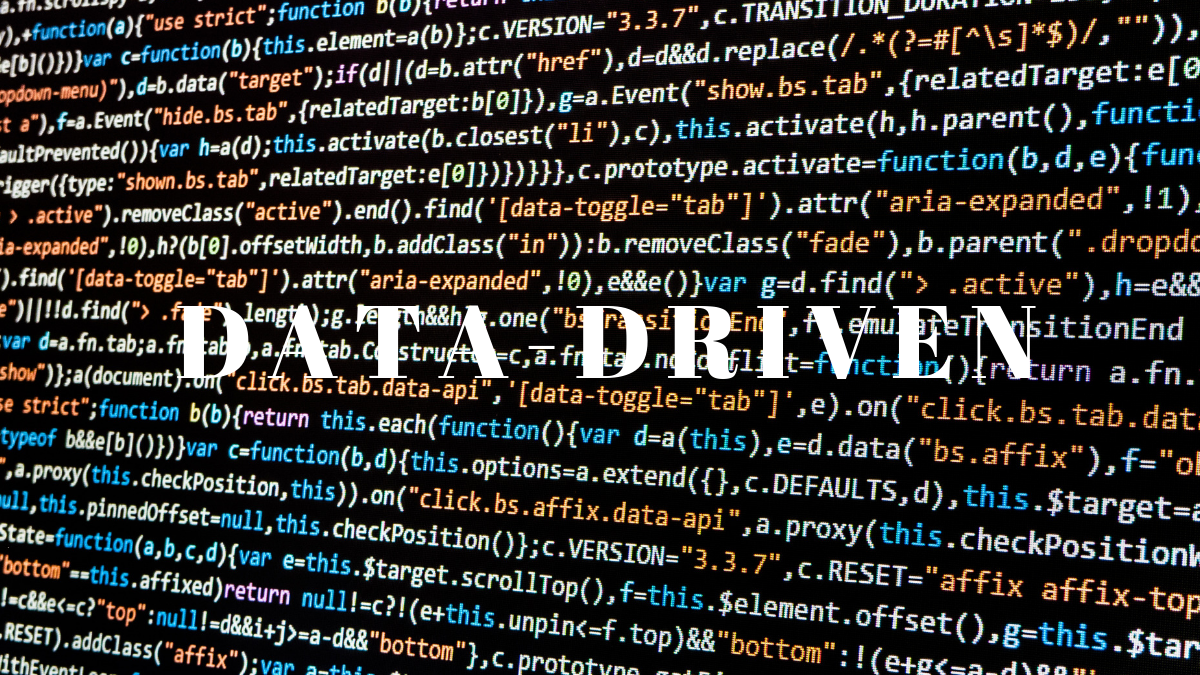Data-Driven

Our World is awash in data: small data, BIG DATA, messy data, clean data, meaningless data and useful data, among other types. Many make their livings in and around financial data, as humans seek to make sense of it all. It can become overwhelming.
Having the “right data” is essential to managing a successful business and crucial for making decisions regarding investments. Growth depends upon People (first and foremost), Information (aka ‘Data’, derived from Systems and Analysis) and Capital (to fuel the system). These three elements are interdependent.
In the center of it all lives Data. Those who become experts at analyzing and understanding what it all means equip themselves and their teams for success. Because Good Data is so important, however, one can become lost in the endless search for Perfect Data; that quest can become an endless and unsatisfying feedback loop. Rarely do you find the crystal clear insight that would define the Holy Grail of Data. There is simply too much noise in the system.
Data is impacted by everyone and everything that creates it. That iterative process shapes and molds it into certain forms, all of which are slightly different. As a result, analysts have developed sophisticated tools to parse, extrapolate, sort, sift, pivot, interpolate, compile, blend and refine data in myriad ways. Computer programs and software tools accelerate analysis and reveal insights. Data-driven processes seek to create understanding out of chaos and to make the information useful for specific purposes.
Data is most useful looking backward, since the forces that formed it have stopped moving. It’s a bit like studying a lava flow after the magma has hardened and cooled. You may not find all of the answers you’re seeking in and under it, but at least it’s not still moving!
Yet data-driven analysts typically seek to use the data to uncover patterns that will reveal future outcomes. And that is a far more difficult feat. Pattern recognition is crucial and certainly very helpful, but it’s never 100%. More analysis may yield greater clarity, or it may just produce more data to cloud the picture. Past experience will only yield similar outcomes if future inputs are all the same; that is rarely the case.
Organizations adapt as they grow and multiple forces shape them. Leaders necessarily seek to use data, but rely heavily on their instincts, which are actually a reflection of collective experiences and alternate outcomes. Data represents the measured outcomes of the cumulative efforts of the People who create the data points. As the People change, along with the Processes used by them, so goes the Data.
The better someone understands a particular business, its markets and its continually evolving influences, the more effective they can be in decision-making. Data contributes to understanding, but it does not live in a vacuum because it isn’t created in one. To be data-driven is not enough to get comfortable with the potential outcomes; that requires foresight and confidence.
We are all a work in progress. Data helps us understand where we are today as individuals and organizations. Yet it doesn’t reveal what we will become.
Tempus Maximize!







